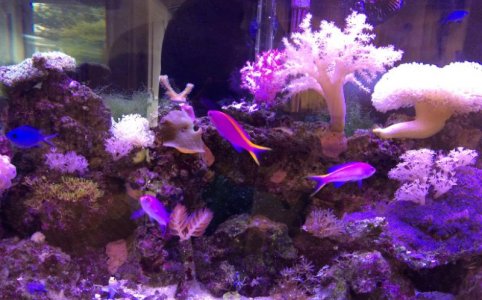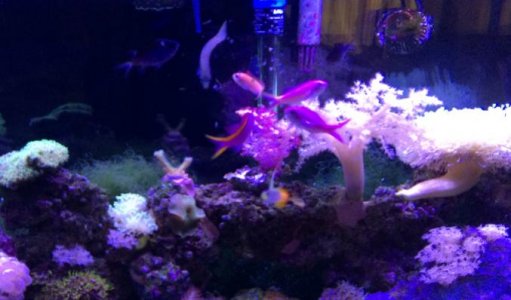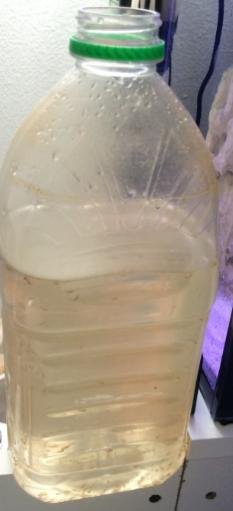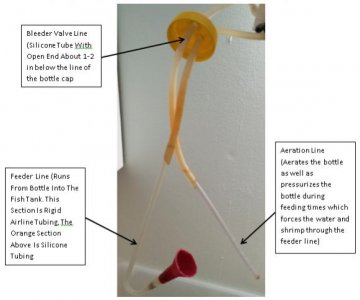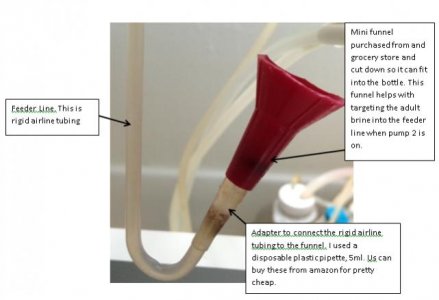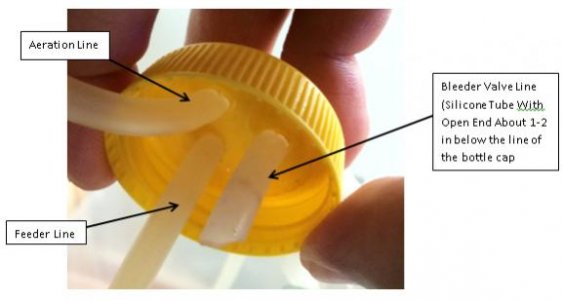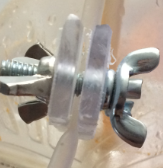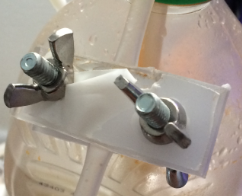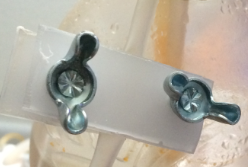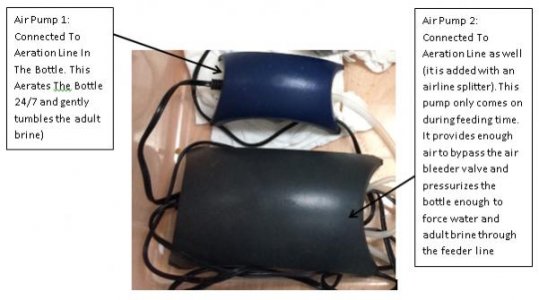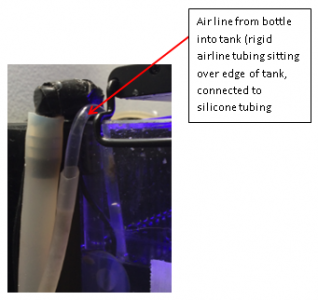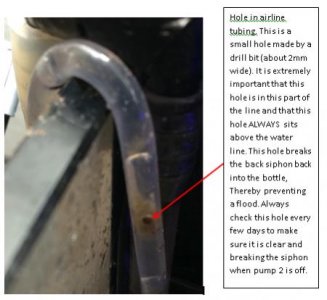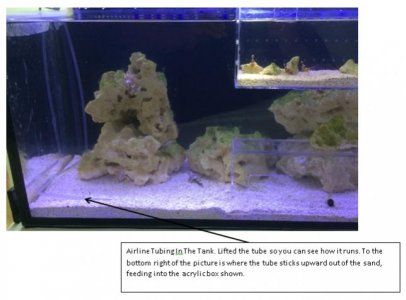ReefJunkie01
New member
Hey Guys. Just wanted to post an update on here. Last week I had picked up a third purple queen anthias from the local fish store, and, I'm happy to say, as of yesterday, the third purple queen is happy, doing well, and now eating frozen food along with my other two purple queens.
What people have been posting on this thread about anthias learning from each other seems to be definitely ringing true with this fish as well. I guess the key is to get the first ones to eat frozen.
To summarize the week:
Friday night - Acclimated fish and put it into the tank. It swam straight to the other two purple queens and they instantly started congregating together. On this night the fish did not seem to want to hide one bit, which I was very surprised by. I fed the tank that night, but she didn't eat anything.
Saturday - As of saturday morning, the fish had been hiding amongst the rockwork. Something must have spooked it. Seemed very good at hiding, my tank is only 46 gallons and only found her hiding under a crevice in a rock after about 20 minutes of looking. She kept hiding all of Saturday, Sunday, and Monday. Not sure if she was eating, as my baby brine shrimp feeder had been feeding on it's regular schedule, so she might have been eating, not sure.
Tuesday - came home from work. She was out, but hiding underneath the lifted piece of flat rock on the right side of my tank (flat rock lifted with two other pieces of rock to form a "bridge"), She stayed there all day, but, she would peck whenever the baby brine shrimp feeder came on, so at least it looks like she started eating.
Wednesday - she's fully out now, but, whenever I feed the tank and the fish frenzy commences, she just backs off, watches the other fish for a couple of seconds, then goes and hides. When the feeding stops, she comes back out.
Thursday - still out, but, she now stays out when the baby brine shrimp feeder runs, eating the bbs with all the other fish. She will still run and hide when I feed frozen though.
Friday - she's still eating the bbs, and much more actively now. Also, she stayed out tonight in the feeding frenzy while I fed frozen, and, she even pecked (and swallowed) about 3-4 small shaved pieces of gut loaded brine. Very happy about this.
Saturday (last night) - she's not as actively eating the bbs now, but, wouldn't you know it, when I fed the frozen, she ate the frozen as aggressively as my other two purple queens. I couldn't believe she took to it this quickly.
What people have been posting on this thread about anthias learning from each other seems to be definitely ringing true with this fish as well. I guess the key is to get the first ones to eat frozen.
To summarize the week:
Friday night - Acclimated fish and put it into the tank. It swam straight to the other two purple queens and they instantly started congregating together. On this night the fish did not seem to want to hide one bit, which I was very surprised by. I fed the tank that night, but she didn't eat anything.
Saturday - As of saturday morning, the fish had been hiding amongst the rockwork. Something must have spooked it. Seemed very good at hiding, my tank is only 46 gallons and only found her hiding under a crevice in a rock after about 20 minutes of looking. She kept hiding all of Saturday, Sunday, and Monday. Not sure if she was eating, as my baby brine shrimp feeder had been feeding on it's regular schedule, so she might have been eating, not sure.
Tuesday - came home from work. She was out, but hiding underneath the lifted piece of flat rock on the right side of my tank (flat rock lifted with two other pieces of rock to form a "bridge"), She stayed there all day, but, she would peck whenever the baby brine shrimp feeder came on, so at least it looks like she started eating.
Wednesday - she's fully out now, but, whenever I feed the tank and the fish frenzy commences, she just backs off, watches the other fish for a couple of seconds, then goes and hides. When the feeding stops, she comes back out.
Thursday - still out, but, she now stays out when the baby brine shrimp feeder runs, eating the bbs with all the other fish. She will still run and hide when I feed frozen though.
Friday - she's still eating the bbs, and much more actively now. Also, she stayed out tonight in the feeding frenzy while I fed frozen, and, she even pecked (and swallowed) about 3-4 small shaved pieces of gut loaded brine. Very happy about this.
Saturday (last night) - she's not as actively eating the bbs now, but, wouldn't you know it, when I fed the frozen, she ate the frozen as aggressively as my other two purple queens. I couldn't believe she took to it this quickly.

